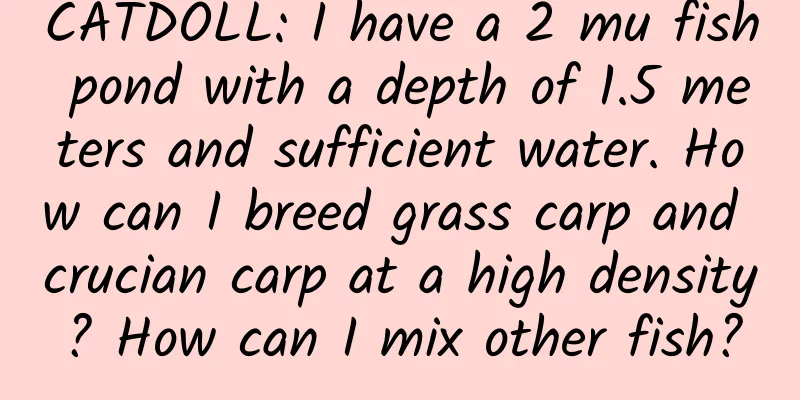CATDOLL : CATDOLL: Do you know the common problems and causes of white shrimp farming?

Common problems and causes of Penaeus vannamei farming, do you know?Black spots on the shrimp body: There is a sticky feeling as if there is a wound. Reasons: ①: Bacteria infect the wound ②: Excessive ammonia, nitrogen and nitrite. Muscles are turbid and bowed: ①: Stress (heavy rain or hot sunny day at noon). ②: Lack of nutrition, poor physical condition. ③: Bubble disease (large changes in p value and dissolved oxygen). Swimming feet and fantail are a little white. ④: Microsporidia (the shrimp shell is very old, has not been shed for a long time, is thin, and the muscles fall apart when the shell is peeled off) (There are two situations that cannot be treated ①: The shrimp fry themselves carry it. ②: The pond bottom is too dirty and there are microsporidia eggs) Soft-shelled shrimp: It takes a lot of physical strength and dissolved oxygen for shrimp to molt. The reasons are as follows: ① Calcium deficiency: Shrimp do not have enough calcium to harden their shells when they just molt. ② Lack of oxygen. ③ Nutritional deficiencies: 1. Mineral nutrition 2. Multidimensional 3. Calcium 4. Trace elements. ④. Low salinity (low salinity hard shells are weaker than high salinity -> more trace elements in the water) ⑤. Continuous molting. ⑥. Vibrio infection (soft body, red whiskers, red all over, continuous molting without hard shells) Gills: ① Rotten gills: observed under a microscope at low power. ② Yellow gills: slightly yellowish, low pH value at the bottom of the pond or too low dissolved oxygen (sprinkling lime to increase the pH value). ③ Black gills: gills (caused by lack of oxygen, dirty bottom) will appear when the gills are fragile: 1 Rotten gills. 2 No rapid hardening of the shell during molting. ④ Swollen gills: no space between gill filaments (large pH value changes or long-term high dissolved oxygen, high pH) Ciliates : This is most common during the liver transition period. It occurs with liver transition. The conditions for occurrence are: ① Too much organic matter in the water or bottom sediment. ② Mainly small algae. ③ Ponds with too many bacteria. Prevention: ① Ensure that the shrimps are in good physical condition and molt normally (1. Feed more before going to the pond. 2. Feed more nutrients. 3. Use good water in the early stage.) ② Use more oxidative bottom modification. (Ciliate eggs mostly come from the pond bottom. Using oxidative bottom modification can decompose organic matter, reduce bacteria, and reduce the source of ciliates) ③ Stable water quality. (Measures; 1. Detoxify more. 2. Supplement with soluble organic fertilizer). Treatment: ① When there are few ciliates, use oxidative decomposition substrate to inhibit them. ② When there are many ciliates, use Chinese herbal medicine or disinfectants to promote molting. ③ When there are too many ciliates, you need to buy insecticides (zinc sulfate, mebendazole). After killing the insects, the shrimps are very weak and need to recover quickly. Reasons for unsuccessful shrimp fry water testing: 1. The difference between the pond salinity ≤ the seedling field is too big. When it is suitable for seedlings, you can put some salt in the bucket. The survival rate is guaranteed within 4 degrees. The salinity is always consistent. The number of grids changes with the temperature (high temperature is low, low temperature is high). 2. Influence of drugs: After disinfection, there are drug residues. 3. Test seedling container: It may have contained disinfectants or other irritants. 4. Salinity is too low (Solution: 1. Desalination in the nursery or salting in the enclosure. 2. Detoxification and water change.) The survival rate of shrimp fry is not high: 1. There are miscellaneous fish and shrimps in the pond. 2. Poor management during the seedling stage (high p value, swollen gills, black gills.) 3. The shrimp fry are weak. 4. Salinity. |
<<: CATDOLL: Can silver carp be raised as pets? How to raise them?
>>: CATDOLL: Which one is more expensive, regular shrimp or mantis shrimp?
Recommend
CATDOLL: What do little spiders at home eat?
1. What do the little spiders you catch at home e...
CATDOLL: How to remove leeches from river clams
1. How to remove leeches from river clams Split t...
CATDOLL: How many Q coins does it cost to light up the entire map by sending penguins?
1. How many Q coins does it cost to light up the ...
CATDOLL: How to effectively deal with uterine pus problems in sows
Understanding the problem of uterine abscesses in...
CATDOLL: Where to find wholesale king crabs
1. Where to find wholesale king crabs You can go ...
CATDOLL: The spider was caught (Has the spider been caught)
1. If I catch a spider, keep it in a cage for a d...
What are the taboos in cat’s diet?
Cat dietary taboos: 1. Do not feed cats raw meat. ...
CATDOLL: How to treat bee rot
How to treat bee rot disease Remove the brood spl...
CATDOLL: The costs and benefits of silkworm rearing (What are the costs and benefits of silkworm rearing)
1. How many acres of land are needed to earn 200,...
CATDOLL: Is it still profitable to raise silkworms now? (Is it still profitable to raise silkworms now? Zhihu)
1. What is the profit of raising silkworms on 50 ...
CATDOLL: What to do if there are too many flies in the chicken coop (What to do if there are too many flies in the chicken coop)
1. What should I do if there are a large number o...
CATDOLL: How many golden cicadas can be planted per acre (How many golden cicada seeds can be planted per acre)
1. How many cicada monkeys can be produced per ac...
CATDOLL: How to catch whitebait
1. How to catch whitebait Whitebait live in the u...
CATDOLL: How to solve ammonia poisoning in fish?
1. How to solve ammonia poisoning in fish? [Cause...
How to effectively deal with the problem of sows refusing to breastfeed
introduction For farmers, sows refusing to breast...









